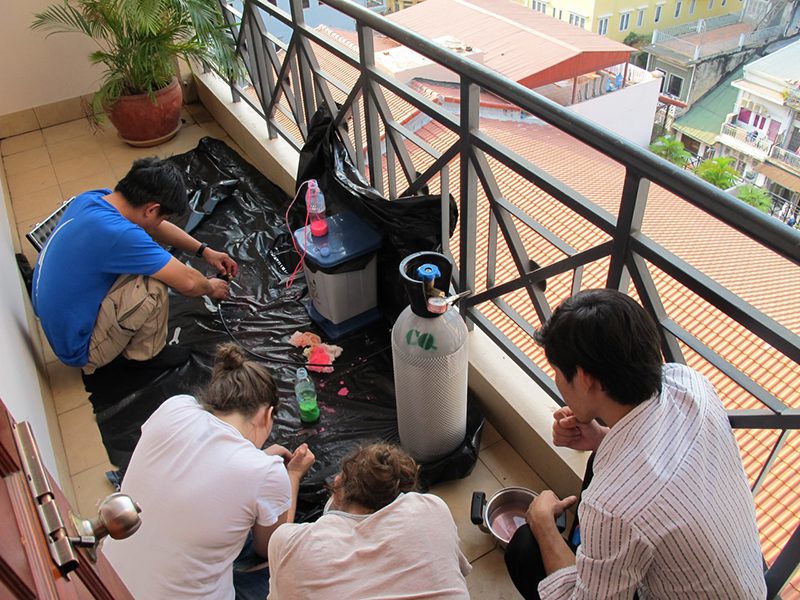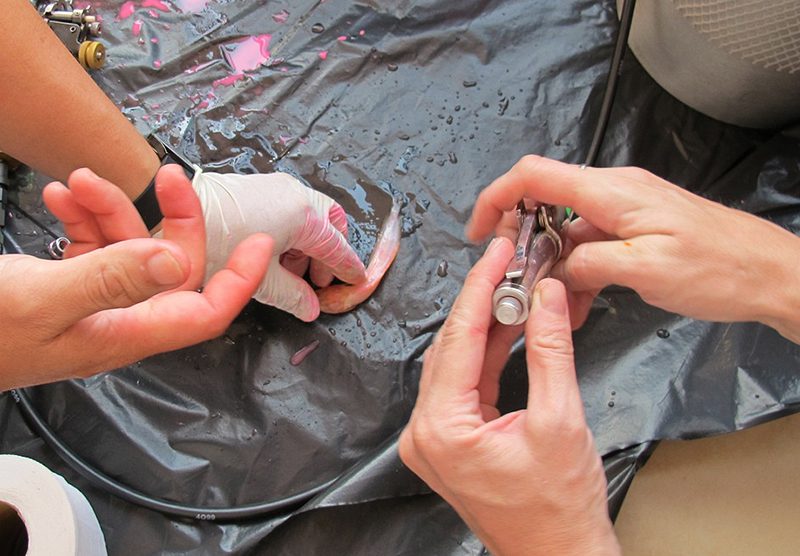Wednesday January 16, 2013

Sometimes, conducting research in challenging environments like the Mekong calls for improvising with the resources at hand. In this case, we performed a fish marking training on the balcony of our tenth-floor hotel room in Phnom Penh, Cambodia. Although we’d much rather be out on the river, time and circumstances forced us to make due with what we had—including holding fish in pots and pans borrowed from the hotel. We purchased live fish from a local fish market, and practiced marking them using two different methods with colored dye (see Splat!).
Our goals were to familiarize local researchers with basic dye marking techniques, to assess how different fish species respond to anesthesia, and to determine how visible the marks are on some common Mekong fishes. These marking techniques are common in the United States, and FISHBIO regularly marks tens of thousands of salmon, trout, and other species each year (see Efficiency at its best, Caudal fin pink). However, these methods have never been used before in the Mekong, so we don’t know how well they will transfer to local species. Starting in March, local researchers will conduct more thorough laboratory experiments on fish anesthesia, how long the marks last, and how well fish survive the marking procedure. They hope this will prepare them to begin marking tens of thousands of fish this October in Cambodia’s Tonle Sap Lake to help asses the impacts of the (fittingly named) dai net fishery.

